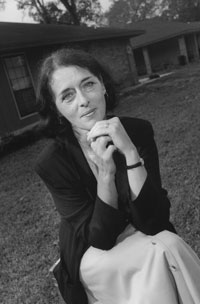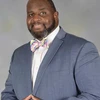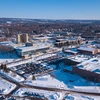|
|
SUNY Fredonia’s Sustainability Committee, which seeks to reduce the university’s carbon footprint and enable behavioral changes that positively impact the environment, was hoping for a headliner worthy of the 40th anniversary of Earth Day.
The Convocation Committee, which coordinates a series of speakers to explore and encourage action relating to a given topic, wanted a Maytum Convocation Lecturer who embodied this year’s theme, “Public Service: Challenges and Opportunities.”
By selecting environmental justice pioneer Lois Gibbs, each group got its wish.
Ms. Gibbs, founder and executive director of the Center for Health, Environment and Justice, was a typical suburban housewife pursuing the American dream in Niagara Falls, N.Y., in the 1970s. That all changed, however, when she discovered that her son’s elementary school had been built on top of a former toxic waste site. Seemingly overnight, she became the leader of a grassroots campaign to call attention to this public health crisis and provide relocation assistance to the residents living in the impacted area.
Indeed, the name "Love Canal," a neighborhood once home to 900 working-class families, still resonates with the legacy of short-sighted industrial practices, severe human health effects caused by exposure to low-level chemical wastes and failure of local and state governments to protect citizens.
Gibbs, who went on to become an inspiration to many who want to make a difference, will speak to students and community members this April 22 — Earth Day — at 2:30 p.m. in Rosch Recital Hall on the SUNY Fredonia campus. She will also conduct a book signing session immediately following her talk in the Rosch Lobby.
“I am thrilled about having her come to our campus because she demonstrates that you do not have to be a famous person to have a dramatic societal impact,” said Jack Croxton, a psychology professor at SUNY Fredonia who also serves as Convocation Committee chair. Dr. Croxton was in graduate school in Ohio when Love Canal dominated newspaper front pages throughout the nation.
The Maytum Convocation Lecture is made possible through an endowment from the Maytum family through the Fredonia College Foundation.
“I also think that the timing of her appearance is important,” he added. “People are becoming very discouraged about the gridlock taking place in our government and are frustrated with our leaders. Lois Gibbs showed that one ordinary citizen with courage and perseverance can really make things happen.”
Gibbs serves as a stirring example of what a determined citizen activist can accomplish to remedy serious issues or public policy concerns, said Political Science Chair David Rankin. “It is incredibly significant to bring Lois Gibbs to Fredonia, not just because of her regional relevance and connection, but also because of her broad impact on raising global awareness and action on how to properly balance industrial development, public health and the environment,” added Dr. Rankin, who also serves as chair of the campus' newly formed FACE (Fredonia Academic Community Engagement) Center, which is also co-sponsoring her appearance.
For the Sustainability Committee, Gibbs’ local relevance, coupled with her impact beyond the local scene, makes her special. “She saw an issue and, rather than backing down because of the magnitude of the issue, took it on and really became the change she wanted to see in the world,” said chemistry Professor Sherri Mason, this year’s Earth Week chairperson.
“With the plethora of environmental issues facing our world, I think it all seems so overwhelming that many people just give up. Lois represents the impact that one person can have,” Dr. Mason said.
Following the elementary school discovery, Gibbs formed a coalition of neighbors that led to the creation of the Love Canal Homeowners Association, giving families a voice in resolving the health and environmental hazards linked to the buried chemicals. Many were completely unaware that more than 20,000 tons of buried toxic waste was literally under their feet.
Despite having no training in community activism, Gibbs became a seminal force in environmental justice, and her name became synonymous with the campaign which was waged for years against various levels of government.
Gibbs first learned of the dump, which had served as a municipal and chemical disposal site until 1950, through a series of articles in the Niagara Gazette that called attention to the old dump site and its proximity to the school. The dump was established in the 1920s in a 6,000-foot, partially dug canal that was to be the first section of a six-mile canal envisioned by William T. Love in the late 1800s to link the upper and lower Niagara River. The Board of Education acquired the property from Hooker Chemical Corporation, the principal company that used the dump, so a new school could be built — despite knowing it contained buried chemical and municipal wastes.
Gibbs, whose 7-year-old son had become ill, soon learned that children of other parents in her neighborhood were also experiencing similar health problems.
A study of the area ordered by the city and county in 1976 identified toxic chemical residues in the air and in sump pumps in a high percentage of homes at the southern end of the canal, in addition to waste drums just beneath or on the surface and high levels of PCBs in the storm sewer system.
Two separate evacuation orders followed, the first in 1978 that initially covered 239 families living in the first two rings closest to the canal, and the second, in 1979. The latter was initially targeted to pregnant women and children under the age of two in response to surveys that identified alarmingly high rates of birth defects, miscarriages and urinary tract disorders, among other health problems, in other parts of the subdivision. Under intense public pressure, President Jimmy Carter ordered a total evacuation of Love Canal a year later.
Often the face of the Love Canal crisis, Gibbs has been featured in hundreds of newspaper and magazine articles, and on television programs such as “60 Minutes,” “Oprah” and major network news programs. A two-hour television movie, “Lois Gibbs: The Love Canal Story,” starring Marsha Mason, was devoted to her story.
Some 32 years later, Gibbs firmly believes that every action — from initial health studies to the final evacuation — was taken for political reasons. Had a large, strong citizen organization not been formed, Love Canal Homeowners Association members contend families would still be living at Love Canal, and authorities would still be denying any health problems.
Gibbs established the Center for Health, Environment and Justice, located in Falls Church, Va., 28 years ago to provide assistance to citizens faced with environmental problems. In her travels across the U.S., Gibbs has learned that Love Canal is not the only environmental problem facing this country. Indeed, chemical wastes and emissions continue to threaten thousands of communities nationwide.
The environmental movement is a classic “David and Goliath” story, Dr. Mason added. “We, the people, are David. And we need crusaders like Ralph Nader and Lois Gibbs and Erin Brockovich and Vandana Shiva to provide us with the inspiration to keep up the fight and to know that we can win.”




